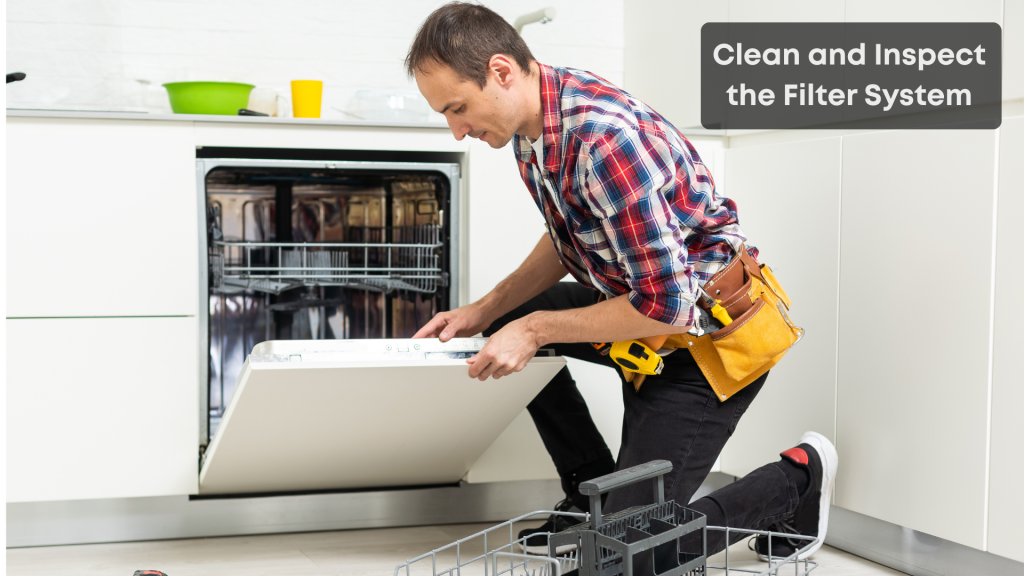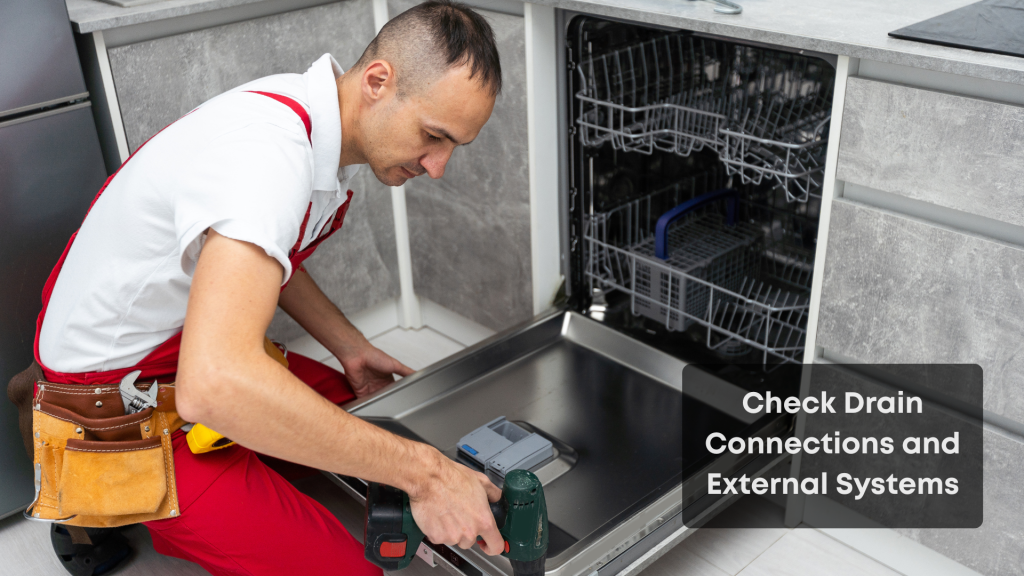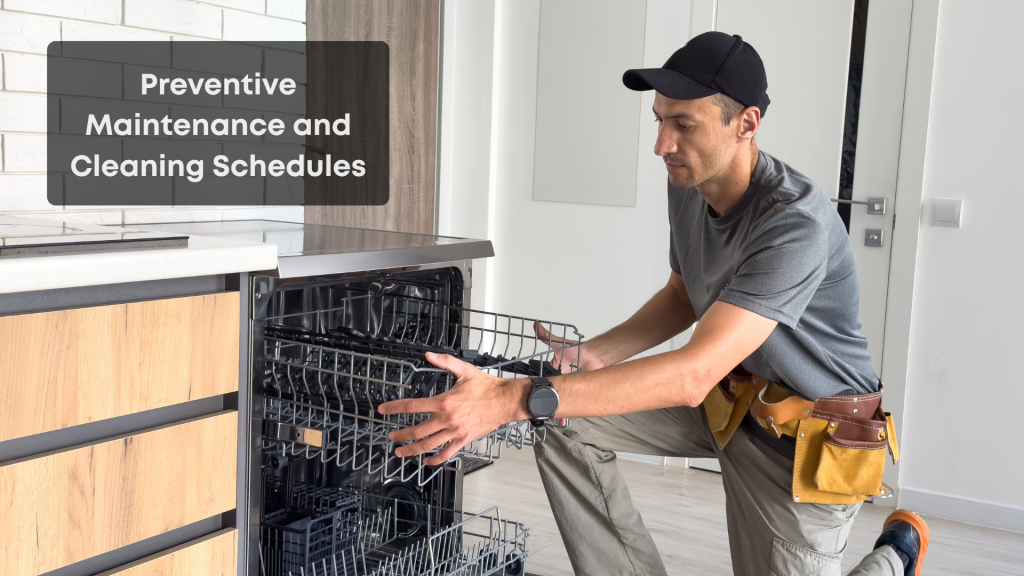What to Do If Your Dishwasher Isn’t Draining

The dinner party was perfect until guests discovered standing water pooling in the bottom of the dishwasher, transforming what should have been a simple cleanup into an unexpected puzzle. Food particles float among murky water while the cycle refuses to complete, leaving expensive dishes soaking in contaminated water that threatens both hygiene and appliance performance. This scenario frustrates homeowners across Canada, yet most dishwasher not draining problems stem from preventable issues that can be resolved without calling a service technician.
A non-draining dishwasher disrupts your home routine while potentially causing water damage and creating unsanitary conditions in your kitchen. Dishwasher not draining Understanding the root causes of drainage problems and implementing systematic troubleshooting steps can restore functionality while preventing future issues. Most drainage issues result from clogs, debris accumulation, or simple maintenance oversights rather than complex mechanical failures requiring professional intervention.
Understanding Dishwasher Drainage Systems
Modern dishwashers feature sophisticated drainage systems including self-cleaning filters, drain pumps, and spray arms that work together to remove food debris and grease from wash water. The Dual Power Filtration system in many models captures food scraps while allowing clean water to recirculate, but this system requires regular maintenance to prevent clogged drain situations.
Key components include the drain filter at the bottom of the tub, spray arms that distribute water, the drain pump that evacuates dirty water, and the drain connection to your kitchen sink or garbage disposal. Understanding how these components interact helps identify where problems originate and guides effective troubleshooting strategies.
Step 1: Safety First and Initial Assessment
1Before beginning any troubleshooting, ensure the dishwasher is completely turned off and disconnected from power. Check for error codes or blinking lights on the control panel that might indicate specific problems.
Safety Tips:
- Never reach into standing water while the unit has power
- Wear rubber gloves when handling dirty water or debris
- Keep electrical components away from water
- Be cautious of sharp objects that may be hidden in food debris
Assess the extent of standing water and note any unusual odor, which can indicate bacterial growth or mold formation. Document any visible food particles, grease, or soap scum accumulation that might contribute to the drainage issue.
Step 2: Remove Standing Water and Debris
2Manually remove standing water using a dishwasher-safe bowl or similar container. This allows access to the filter section and drain components for thorough inspection and cleaning.
Water Removal Process:
- Use towels or a microfiber cloth to absorb remaining water
- Remove visible food particles and debris by hand
- Check the garbage disposal if connected to ensure it’s functioning
- Run hot water at the kitchen faucet to clear the sink’s drain
Step 3: Clean and Inspect the Filter System

3The drain filter represents the most common source of drainage issues. Located at the bottom of the dishwasher tub, this component captures food waste and requires regular cleaning to maintain proper function.
Filter Cleaning Process:
- Locate the cylindrical filter at the bottom of the tub
- Unscrew and remove the filter assembly using gentle pressure
- Rinse under hot water to remove food residue and grease
- Use an old toothbrush to scrub stubborn residue and buildup
- Soak in white vinegar solution for 15 minutes if heavily soiled
- Rinse thoroughly and reinstall according to manufacturer instructions
Deep Cleaning Solution:
For stubborn grease and mineral deposits, create a cleaning solution using equal parts white vinegar and hot water. Add a tablespoon of baking soda for extra cleaning power against limescale and soap scum accumulation.
Step 4: Clear Spray Arms and Distribution System
4Spray arms distribute wash water throughout the dishwasher but can become clogged with food particles, mineral build-up, and soap residue. Blocked spray holes reduce efficiency and contribute to poor drainage.
Spray Arm Maintenance:
- Remove lower, upper, and third rack spray arms if equipped
- Rinse under hot water to remove loose debris
- Use a toothpick or thin wire to clear individual spray holes
- Soak in vinegar solution to dissolve mineral deposits
- For severe clogs, use a steam cleaner or pressure washer on low setting
- Reinstall ensuring proper alignment and secure mounting
Step 5: Check Drain Connections and External Systems
5External drainage connections can cause backup issues even when internal components function properly. Check the garbage disposal, air gap, and drain connection points for clogs or improper installation.

External System Inspection:
- Run the garbage disposer to clear any accumulated food waste
- Check the air gap (chrome dome near sink) for debris
- Inspect the high loop configuration under the sink
- Verify proper drain connection to disposal or sink drain
- Test the kitchen sink drainage independently
When to Call a Plumber:
If multiple drains in your kitchen are backing up, or if you suspect frozen water lines, contact a qualified plumber rather than attempting complex drain work yourself.
Deep Cleaning and Maintenance Procedures
Once drainage is restored, implement a comprehensive deep cleaning protocol to prevent future issues and eliminate odor, bacteria, and mold growth. This process addresses residue buildup throughout the system while maintaining optimal performance.
Complete Cleaning Protocol:
- Run empty cleaning cycle with dishwasher tablets or affresh® dishwasher cleaner
- Follow with vinegar cycle using 2 cups white vinegar in a dishwasher-safe bowl
- Sprinkle baking soda on the bottom and run short hot water cycle
- Clean door seals and rubber gasket with dish soap solution
- Wipe stainless steel surfaces with stainless steel cleaner
- Use rubbing alcohol on a microfiber cloth to disinfect handles and controls
Addressing Hard Water and Mineral Issues
In areas with hard water, mineral deposits accelerate buildup and reduce efficiency. Consider installing a water softener system and using citric acid or specialized cleaning tablets monthly to prevent limescale accumulation.
Professional Diagnosis and Repair
Some drainage issues require professional intervention, particularly when mechanical components like the drain pump, drain motor, or impeller malfunction. Advanced diagnostic tools including a multimeter help identify electrical issues that affect drain valve operation.
Professional Service Indicators:
- Persistent drainage issues after thorough cleaning
- Error codes indicating faulty pump or motor problems
- Unusual noises during the drain cycle
- Signs of clogged drain hose requiring internal access
- Electrical problems affecting drain motor function
- Complex sump system issues
Preventive Maintenance and Cleaning Schedules

Establishing Regular Cleaning schedules prevents most drainage issues while extending appliance life. Home maintenance routines should include weekly, monthly, and seasonal dishwasher care protocols.
Recommended Cleaning Schedules:
Weekly:
- Check filter for visible debris and rinse if needed
- Wipe down door gasket and seals
- Run hot water at kitchen faucet before starting dishwasher
Monthly:
- Complete filter removal and thorough cleaning
- Clean spray arms and check for clogs
- Run cleaning cycle with cascade dishwasher cleaner or similar product
- Clean dispenser and detergent compartments
Seasonally:
- Professional inspection and maintenance service
- Deep cleaning of entire drainage system
- Check drain connection points and external systems
- Consider upgrading to more efficient white goods if applicable
Why Choose Toronto Refrigeration?
Toronto Refrigeration provides comprehensive dishwasher repair and maintenance services throughout the Greater Toronto Area, combining technical expertise with exceptional customer service to resolve complex drainage issues and prevent future problems.
Our Service Advantages:
- Expert diagnosis of complex drainage problems and faulty pump issues
- Professional drain snake and specialized tools for severe clogs
- Comprehensive cleaning services including Post Construction Cleaning and Moving Cleanup
- Advanced knowledge of Dual Power Filtration and modern dishwasher systems
- Emergency response for urgent drainage and water damage situations
- Preventive maintenance instructions and home maintenance guidance
- Professional-grade cleaning products and specialized equipment
Our certified service technicians understand the complexities of modern dishwasher systems, from basic filter maintenance to complex drain pump repairs. We provide comprehensive solutions for residential and commercial clients, including specialized services like Vacation Rental Cleaning and maintenance for high-use environments.
Beyond basic repairs, we offer consultation on upgrading older systems, optimizing efficiency, and implementing preventive care strategies that minimize future drainage problems. Our expertise extends to related kitchen appliances and systems, ensuring comprehensive support for your home maintenance needs.
We also provide specialized services to deodorise and sanitize dishwashers affected by severe bacterial growth or mold issues, using professional-grade equipment and techniques that exceed standard cleaning protocols. Whether you need routine maintenance or emergency drainage repair, our team delivers reliable solutions with guaranteed results.
Advanced Troubleshooting and Professional Tools
When basic cleaning doesn’t resolve drainage issues, advanced troubleshooting may involve specialized tools and techniques. Dishwasher not draining Professional services like Drain Doctor systems can address severe clogs in the drain hose or external connections that aren’t accessible through standard maintenance procedures.
Issues like fruit flies or persistent odor despite thorough cleaning may indicate deeper problems requiring professional assessment. Similarly, mildew or mold growth in areas not accessible to standard cleaning protocols often necessitates specialized remediation techniques.
Conclusion
A non-draining dishwasher disrupts daily routines but most issues can be resolved through systematic cleaning and maintenance. Understanding your dishwasher’s drainage system, implementing Regular Cleaning schedules, and knowing when to seek professional help ensures optimal performance and longevity. When dishwasher not draining persist or complex repairs are needed, Toronto Refrigeration provides the expertise and professional service that restores functionality while preventing future issues in your home.